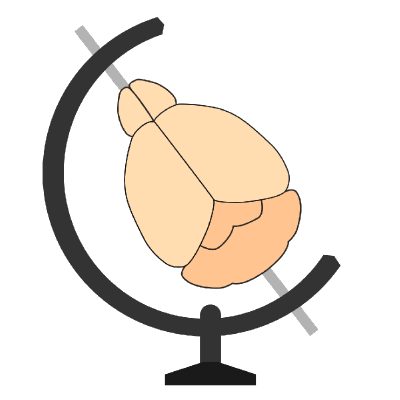May 2024#
The November 2023 roadmap was our first. This document looks back on the last six months of work and outlines plans for the next year.
Current status#
Progress since the last roadmap#
The past few months have focused mostly on improving the maintainability of BrainGlobe as a whole, and making it easier to develop new tools in the future. Some developments include (for more details on these, see the blog):
The
brainregnapari plugin is now bundled withbrainregto simplify maintenance.brainreg-segmentis now calledbrainglobe-segmentationto reflect its future compatibility with other registration tools.The old
cellfindercommand-line tool is now calledbrainmapperand is part ofbrainglobe-workflows. This is part of work to separate the core BrainGlobe software from convenience tools (“workflows”) developed for specific applications.The old
cellfinder-coreandcellfinder-naparitools have been merged, and are now known just ascellfinder. This is to simplify maintenance and reduce confusion (we used to have three cellfinders!).bg-spaceis now known asbrainglobe-spaceto standardise naming.bg-atlasapiandbg-atlasgenhave been merged and are now known asbrainglobe-atlasapito standardise naming.imiohas been brought into thebrainglobe-utilspackage, to reduce the number of packages we maintain.We’ve increased the robustness of
brainglobe-utilsby adding lots of automated tests.brainrenderhas been updated so that it now works with the newest versions of Python.A new
LineActorhas been added tobrainrender.bgheatmaphas been updated so that it now works with the newest versions of Python and now released asbrainglobe-heatmap.brainglobeversion 1 has been released. This new “metapackage” allows one line installation of all BrainGlobe tools.We’ve fixed a lot of small bugs and hugely reduced the number of open issues.
We’ve standardised the tooling for all repos to simplify development and maintenance.
We’ve released
brainrender-naparito allow for visualisation of atlas-registered data in napari (alongside the existingbrainrender).We’ve fixed a number of scaling and rotation issues with some BrainGlobe atlases.
Issues#
It is not yet possible to carry out all BrainGlobe functionality via the GUI (although we are 90% of the way there)
Documentation for some tools is sparse
Docstrings are often missing, incomplete or not standardised
We have very few API docs
Test coverage is variable (some repos are in excellent shape, others not so much!)
cellfinder uses TensorFlow, and so we’re limited to what Python versions we can support for the metapackage
Only some tools are available on
conda-forge, and soconda install brainglobeis not yet possible.There’s still a lot of small bugs hanging around
Use of the napari plugins isn’t very integrated (lots of opening and closing, saving & reopening)
Some of the atlases have inconsistencies that make their use with particular tools difficult
Future#
Q3 2024#
PyTorch backend for cellfinder, enabling use with the latest versions of Python & release on conda-forge.
All tools installable via
conda install brainglobe -c conda-forgeAutomated benchmarks for cell detection on “real” (full size) data
Re-release of all (fully standardised) atlases
Q4 2024#
Generic layer interpreters (BrainGlobe/10)
All analyses possible without leaving napari
Automated benchmarks for 3D atlas registration on “real” (full size) data
Registration of 2D (e.g. conventional sections) data to an atlas
All tools fully documented
Q1 2025#
All visualisation possible without leaving napari
Consistent and documented API, e.g.
from brainglobe import cellfinderorfrom brainglobe import cell_detector_3D(or both)Registration of 3D subvolume data to an atlas
Intuitive navigation of napari plugins
Create “metaplugin”
Q2 2025#
Atlas generation within napari
Facilitate common analyses/visualisation within napari
Plot cells per brain region
